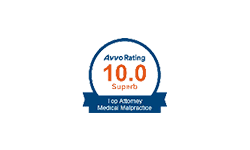After a traumatic event like a car accident, it’s likely that those involved will have some form of injury. The doctor will give them a medical evaluation and assess their injuries. Then, they’ll move on to treating the injury and recovering. But what happens if they have persistent pain that’s not getting better? It’s possible that they have complex regional pain syndrome (CRPS).
If you believe that you or a loved one is suffering from CRPS after a car accident, you may want to look into seeking compensation through a car accident claim. The attorneys at Shrager, Sachs, & Blanco have dedicated, skilled lawyers who work tirelessly to get justice for their clients. We may be able to help you get fair compensation.
It may benefit you to have more information on complex regional pain syndrome. Let’s look into what it is, how it can arise, and what signs indicate that you may have it.
Defining CRPS and Its Symptoms
The National Institute of Neurological Disorders and Stroke defines CRPS as a chronic pain condition that lasts longer than six months. Typical areas where people feel pain will be in their arm, leg, hand, or foot. This pain usually occurs after an injury that affects the peripheral and central nervous systems.
There are two types of CRPS. The differences are as follows:
- CRPS-I: These individuals have CRPS without a confirmed nerve injury.
- CRPS-II: These individuals have a confirmed nerve injury.
The injuries that can lead to CRPS are fractures, sprains, inability to move the limb if it’s set in a fixed position (like in a cast), and soft tissue injuries.
While CRPS is rare in some groups, it can affect anyone. It’s found more commonly in women and in people around 40 years of age. It’s uncommon for the elderly and children under 10 to have CRPS.
CRPS has a variety of symptoms. If you notice any of the following, you may want to speak with your doctor:
- Constant pain that feels like pins and needles or burning
- Stiffness in the joint of the injured area or change in ability to move the limb
- The skin texture of the painful area may look shiny or thin
- Changes in sweating pattern around affected area
- Hair growth or nail growth patterns change
- The limb has tremors or makes jerking motions
- Swelling
- Limb feels warmer or cooler than its opposite limb
- Change in color—the limb could turn red, blue, purple, or pale
If you think you may have CRPS, you should also know that sometimes symptoms fade away temporarily. You may think you’re healing, but then the symptoms come back. That’s why it’s vital for you to see your doctor should you experience the symptoms above.
Diagnosis and Prognosis
There isn’t a definitive test to determine if someone has CRPS. The doctor will have to look at the person’s medical history and their symptoms into account and rule out other conditions. Some of the symptoms for CRPS are similar to other conditions, so it’s a process of elimination. The doctor will do this through tests and perhaps scans.
The prognosis for CRPS is difficult to determine as well. Typically, those who catch it early and begin treatment as soon as possible have a better chance of reducing the pain. Those who are younger usually recover more than older adults. However, there are cases where people treat CRPS and still experience pain.
When it comes to treating CRPS, there are multiple ways that people can try to alleviate their symptoms. There is usually a combination of medication, physical therapy, intervention procedures, and psychotherapy.
There are myriad medications one could need:
- Pain relief
- Antidepressants
- Bone-loss medications
- Intravenous anesthetics (that can help with pain) or immunoglobulin (which can help with immune system disorders)
The physical therapy or rehabilitation works on exercising the limb to improve blood flow and gain back the limb’s strength and mobility. Intervention procedures could include trigger point injections, nerve blocks, or spinal cord stimulation.
There’s also the importance of taking care of mental health. A person who has been in a car accident and now has a chronic, painful injury may develop post-traumatic stress disorder, anxiety, or depression. They need treatment to make sure their mental health is in a good place so they can work on recovery with a clear and healthy mind.
Seek Trusted Representation
Shrager, Sachs, & Blanco has helped many car accident victims get justice. If you’re looking into filing a car accident claim, you may want legal representatives on your side. Give us a call today so we can discuss your legal options.









